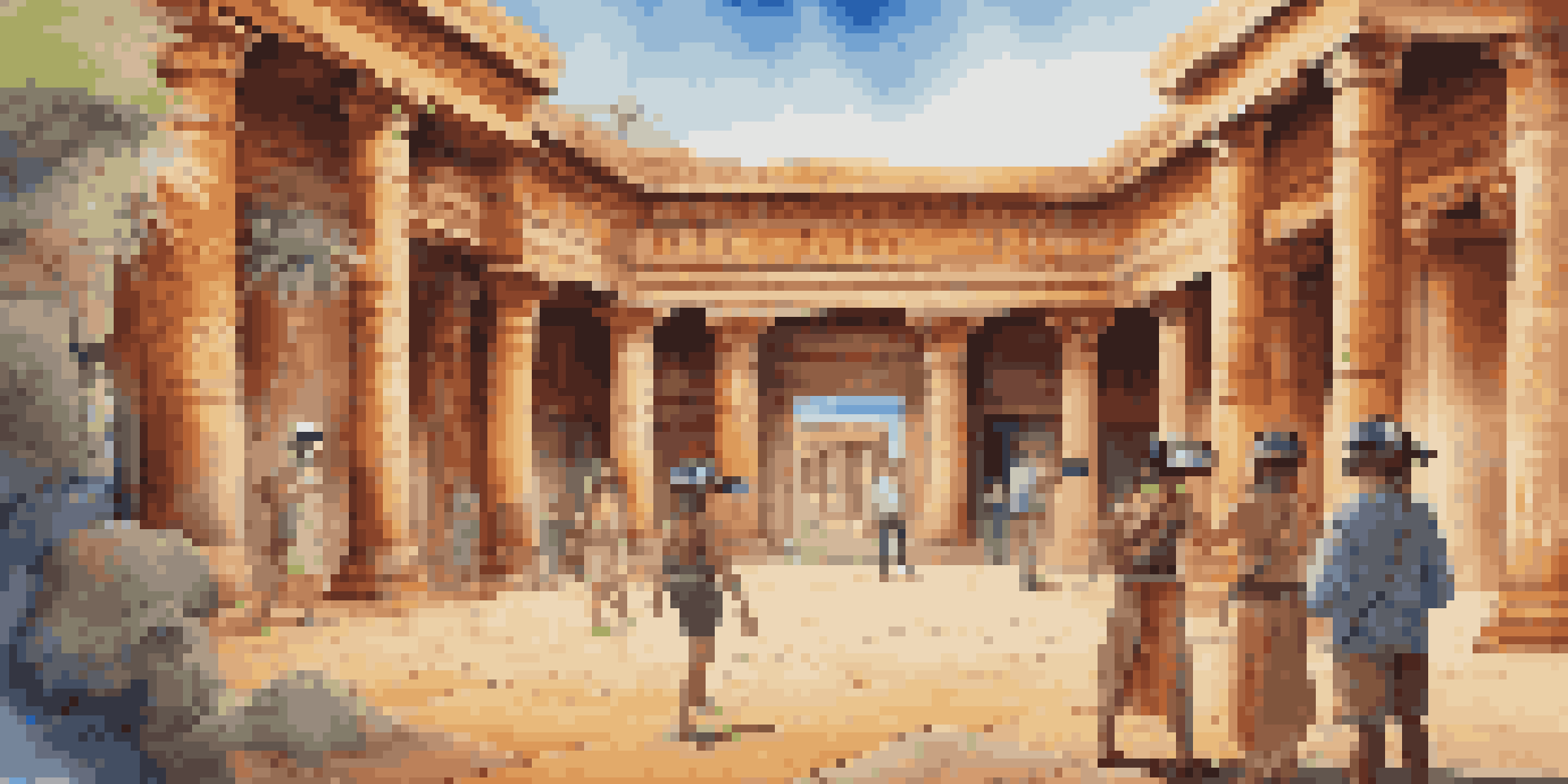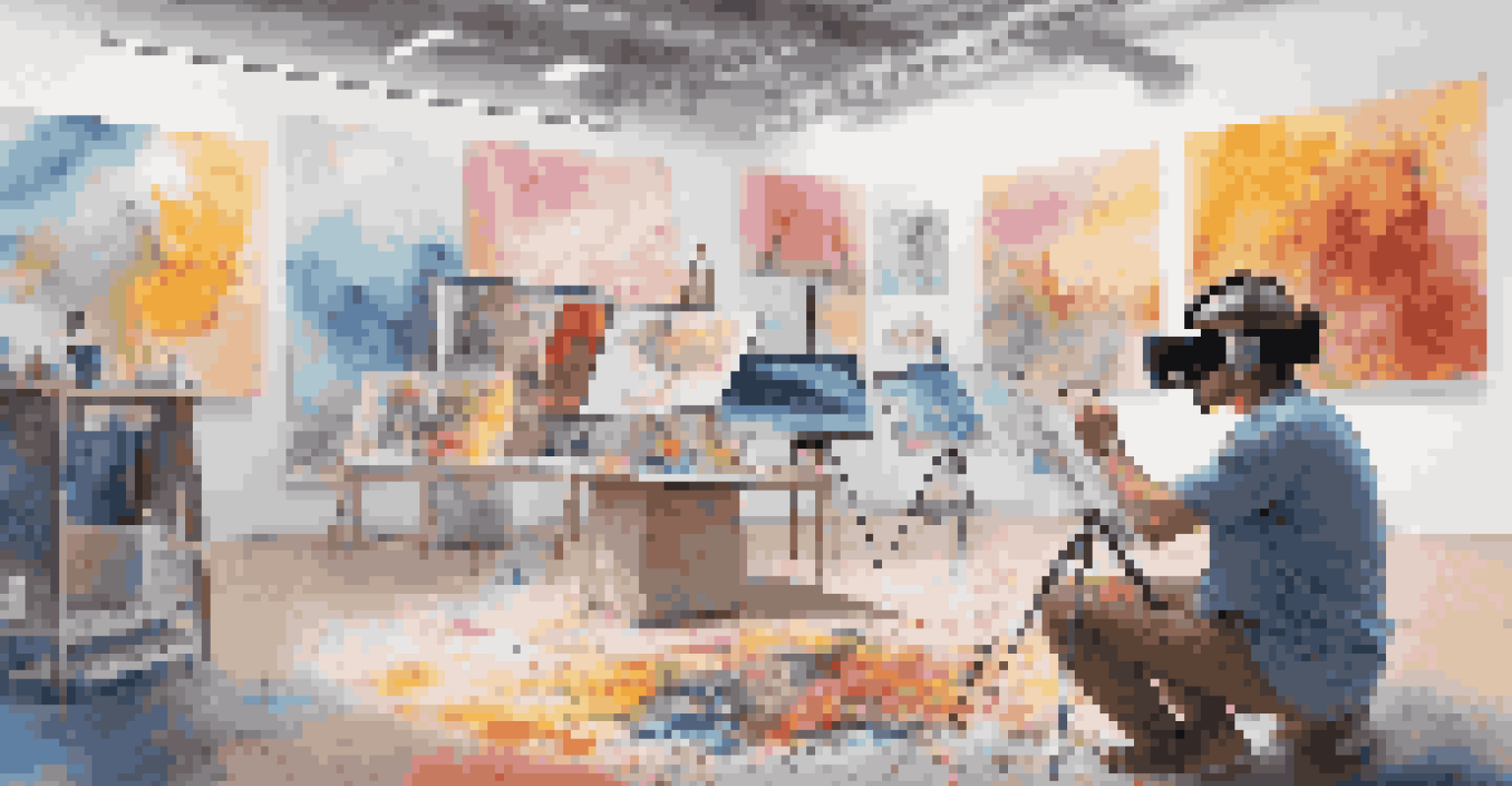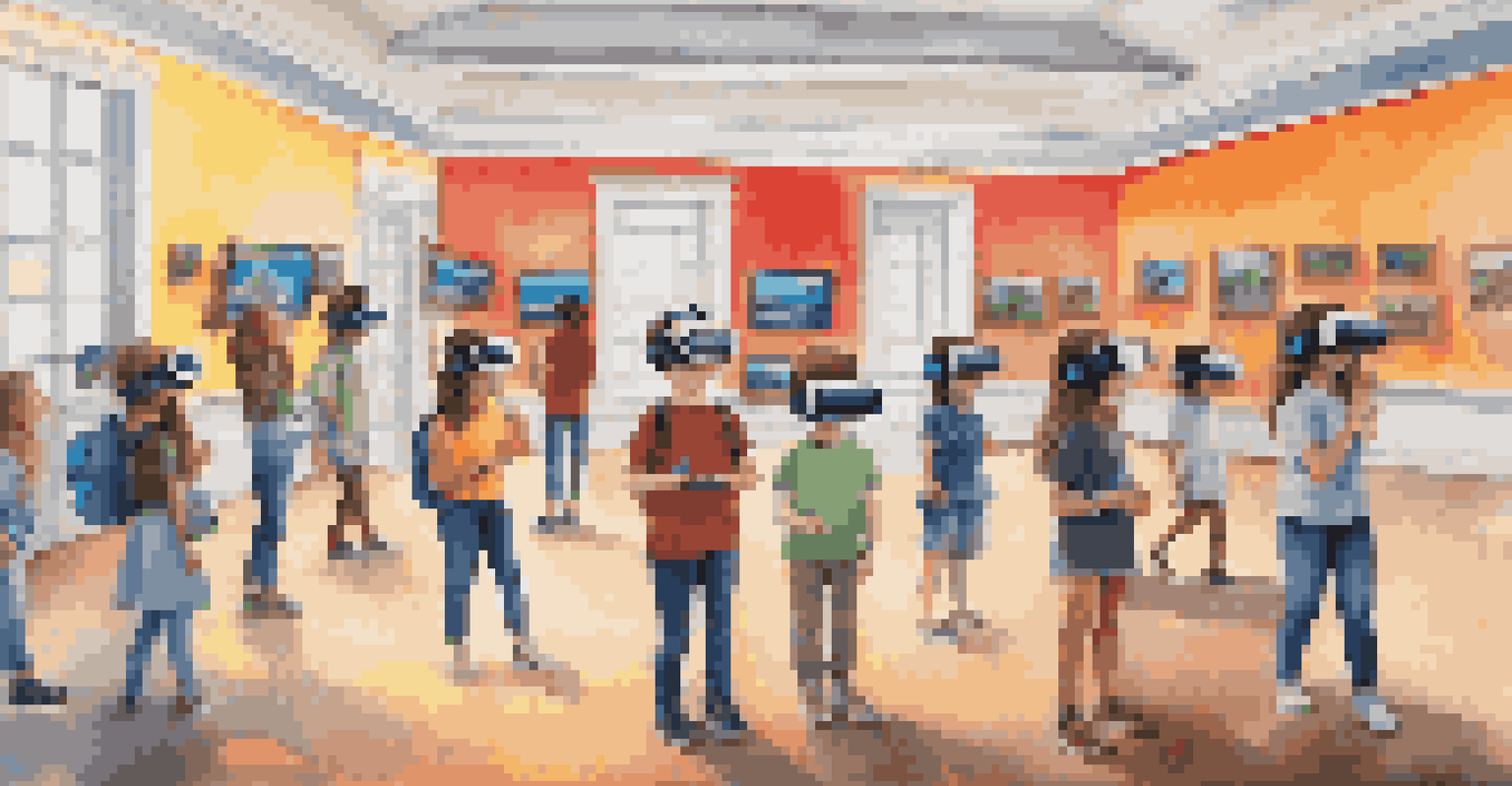Virtual Reality as a Tool for Cultural Preservation in Art

Understanding Virtual Reality and Its Importance
Virtual reality (VR) is an immersive technology that simulates real-world environments. By wearing a VR headset, users can feel as if they are present in a different space altogether. This technology has gained traction in various fields, including entertainment, education, and notably, cultural preservation. As we explore the intersection of VR and art, it becomes clear how this tool can help us safeguard our cultural heritage.
Virtual reality is the first step in a grand adventure into the landscape of the imagination.
The importance of cultural preservation cannot be overstated. Many artworks and artifacts are at risk due to environmental factors, neglect, or conflict. By utilizing VR, we can create digital replicas of these works, ensuring that even if the original is damaged or lost, its essence remains intact in a virtual form. This approach not only protects our history but also makes it accessible to a global audience.
Moreover, VR encourages a deeper connection with art by allowing users to engage with it in innovative ways. Imagine walking through a virtual museum where you can examine a painting up close, or even interact with an ancient artifact without the fear of causing damage. This level of engagement fosters appreciation and understanding of diverse cultures, which is vital in a rapidly globalizing world.
Case Studies: Successful VR Cultural Projects
Several projects have successfully utilized VR for cultural preservation, showcasing its potential. One notable example is the 'Virtual Reality Museum of Immersive Experiences,' which features 3D recreations of historical sites that have been lost to time or conflict. Visitors can explore these environments, gaining insights into the art and culture of the past as if they were truly present.

Another inspiring project is the 'Digital Heritage Project,' which aims to preserve indigenous cultures through virtual storytelling. By using VR, storytellers can share their narratives in an immersive format, helping to keep traditions alive for future generations. This not only educates users but also empowers communities to take ownership of their cultural heritage.
VR's Role in Cultural Preservation
Virtual reality is a transformative tool for preserving cultural heritage, allowing for the creation of digital replicas of artworks and artifacts.
These case studies illustrate how VR can bridge the gap between past and present. By bringing history to life in such an engaging manner, we can ensure that cultural stories are not only preserved but also celebrated. This encourages a collective responsibility to protect our shared heritage for years to come.
The Role of Artists in VR Cultural Preservation
Artists play a crucial role in the integration of VR into cultural preservation efforts. Their creativity and understanding of narrative allow them to craft rich virtual experiences that resonate with audiences. By collaborating with technologists, artists can create dynamic environments that showcase their culture's history while also inviting users to engage with it.
The arts are a reflection of our culture and our society; they preserve the past while shaping the future.
For instance, artists can reimagine traditional art forms in a virtual space, blending contemporary techniques with historical context. This fusion not only brings new life to ancient practices but also provides a platform for dialogue about their relevance today. As a result, VR becomes a canvas for cultural expression and preservation.
Additionally, artists can use VR to reach audiences who might not have access to physical artworks. This democratization of art promotes inclusivity, allowing diverse voices to be heard and appreciated. Ultimately, the collaboration between artists and technology is essential in ensuring that cultural preservation is both innovative and respectful of its roots.
Challenges in Implementing VR for Cultural Preservation
While the potential of VR in cultural preservation is promising, there are challenges that must be addressed. One significant hurdle is the cost of creating high-quality virtual experiences. Developing immersive environments requires substantial investment in technology and expertise, which can be a barrier for smaller organizations or communities.
Another challenge lies in the ethical considerations surrounding representation. It is crucial that the cultures being portrayed have a say in how their stories and artifacts are represented in virtual spaces. Misrepresentation or appropriation can lead to cultural harm, so collaboration with community members is essential during the development process.
Challenges in VR Implementation
Significant challenges, including high costs, ethical considerations, and technological accessibility, must be addressed to effectively use VR for cultural preservation.
Lastly, technological accessibility remains a concern. Not everyone has access to VR equipment, which can limit the reach of these preservation efforts. Finding ways to make VR experiences available across various platforms and devices will be vital in ensuring that cultural preservation through VR can truly benefit a wide audience.
VR and Education: A New Frontier in Cultural Awareness
Integrating VR into educational settings presents an exciting opportunity for cultural awareness. Imagine students being able to virtually visit historical sites or interact with famous works of art from around the world without leaving their classrooms. This immersive learning experience can enhance understanding and appreciation of diverse cultures.
Educational institutions are increasingly recognizing the value of VR in teaching. Programs that incorporate virtual field trips or art history lessons allow students to explore different perspectives and contexts. Such engagement fosters empathy and a sense of global citizenship, as learners become more aware of the world's rich cultural tapestry.
Furthermore, VR can cater to different learning styles, making education more inclusive. Visual learners, for example, can benefit significantly from the ability to see and interact with art in a virtual environment. As we embrace this new frontier in education, VR has the potential to reshape how we teach and learn about culture.
The Future of VR in Cultural Preservation
As technology continues to evolve, the future of VR in cultural preservation looks promising. Innovations in VR hardware and software will likely make it easier and more affordable to create immersive experiences. This could lead to wider adoption among institutions dedicated to preserving art and culture, expanding the reach of these important initiatives.
Moreover, advancements in artificial intelligence (AI) could enhance the interactivity of VR environments. Imagine being able to engage with virtual artists or historians who can provide context and background to the artworks you are experiencing. Such interactions could revolutionize how we engage with cultural heritage, making it more dynamic and informative.
VR Enhances Cultural Education
Integrating VR into education provides immersive learning experiences that foster cultural awareness and appreciation among students.
Ultimately, the goal of using VR for cultural preservation is to create a lasting impact. By making art and history accessible and engaging to all, we can inspire future generations to appreciate and protect the world's diverse cultures. The journey of cultural preservation through VR is just beginning, and the possibilities are truly exciting.
Conclusion: Embracing VR for Cultural Heritage
In conclusion, virtual reality offers a powerful tool for cultural preservation in art and beyond. By creating immersive experiences, we can safeguard our heritage while making it accessible to a broader audience. The collaboration between artists, technologists, and communities will be essential in this endeavor, ensuring that cultural stories are told authentically and respectfully.
As we navigate the challenges and opportunities presented by VR, it is crucial to prioritize ethical considerations and inclusivity. The voices of the communities being represented must be at the forefront of these initiatives to avoid misrepresentation and cultural appropriation. By doing so, we not only preserve art but also honor the cultures from which it originates.

Embracing virtual reality as a means of cultural preservation is not just about technology; it's about celebrating our shared human experience. As we look ahead, let's harness the power of VR to foster understanding, appreciation, and respect for the rich tapestry of cultures that make our world a vibrant place.